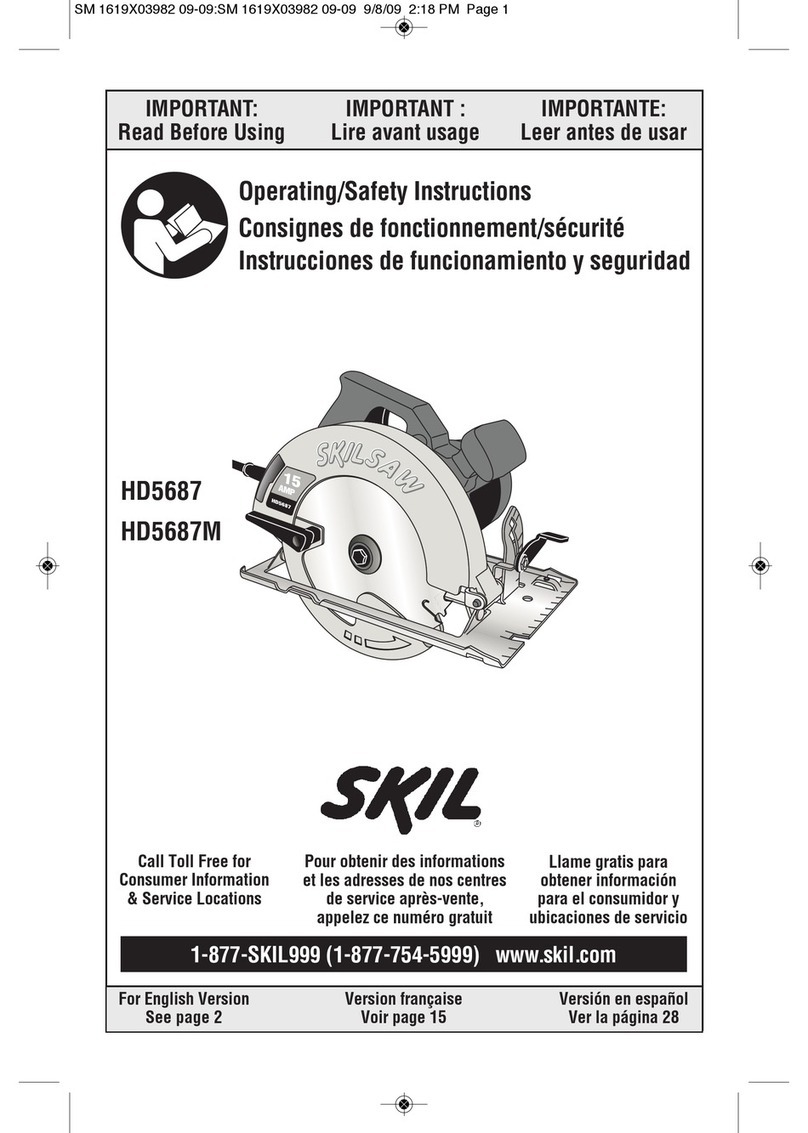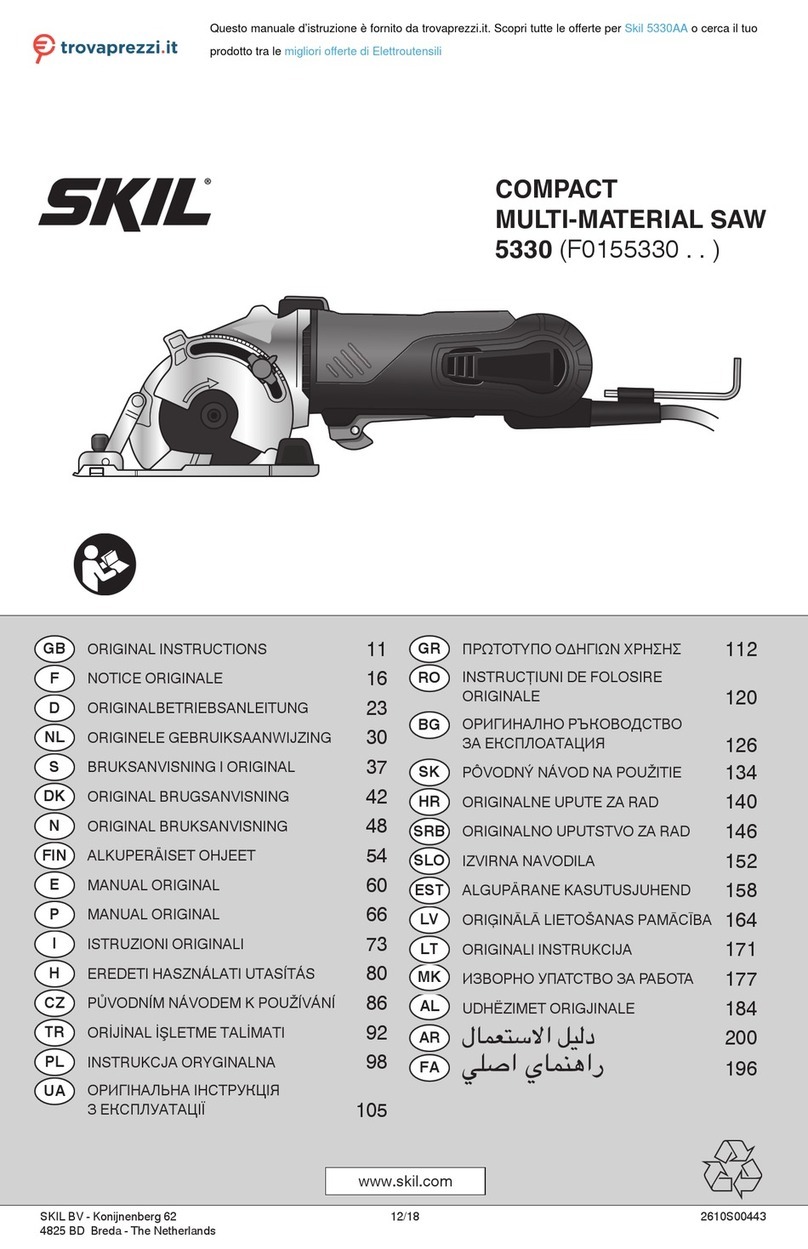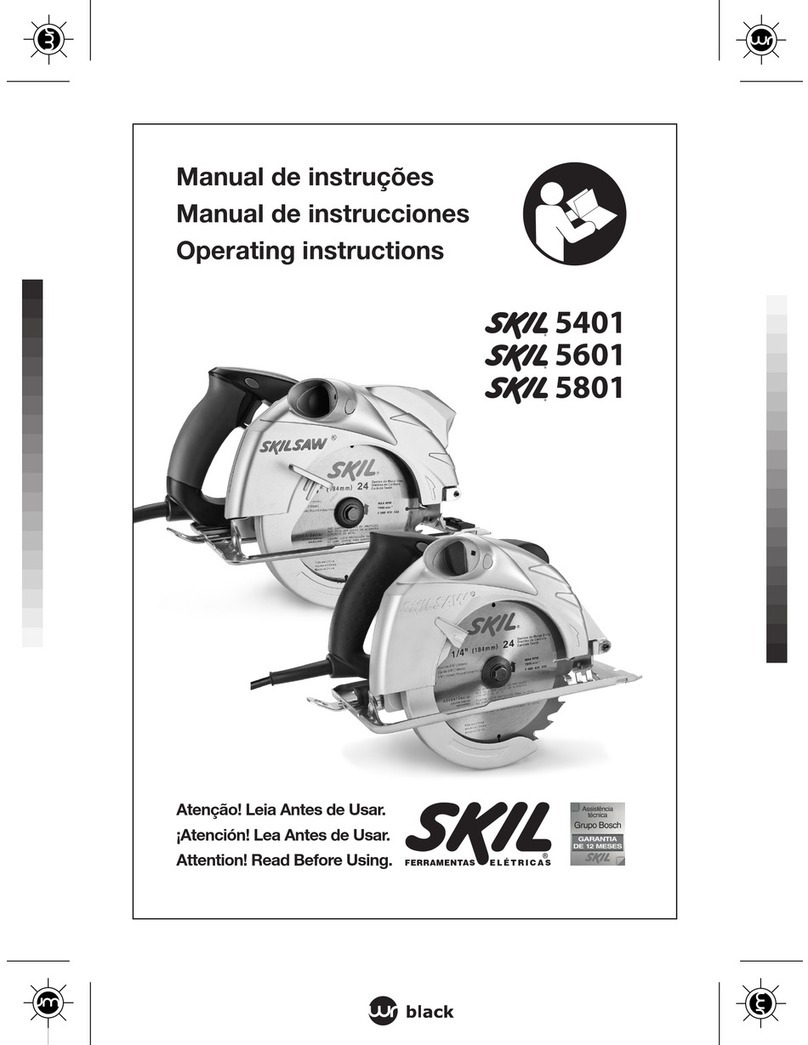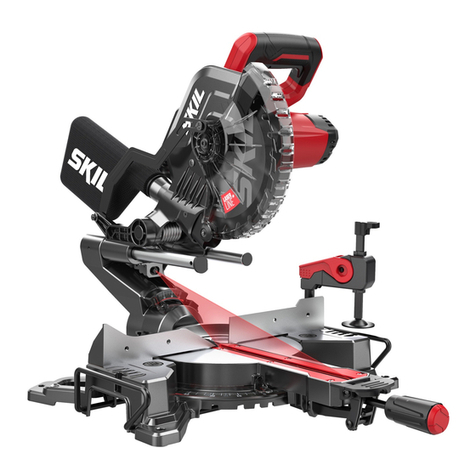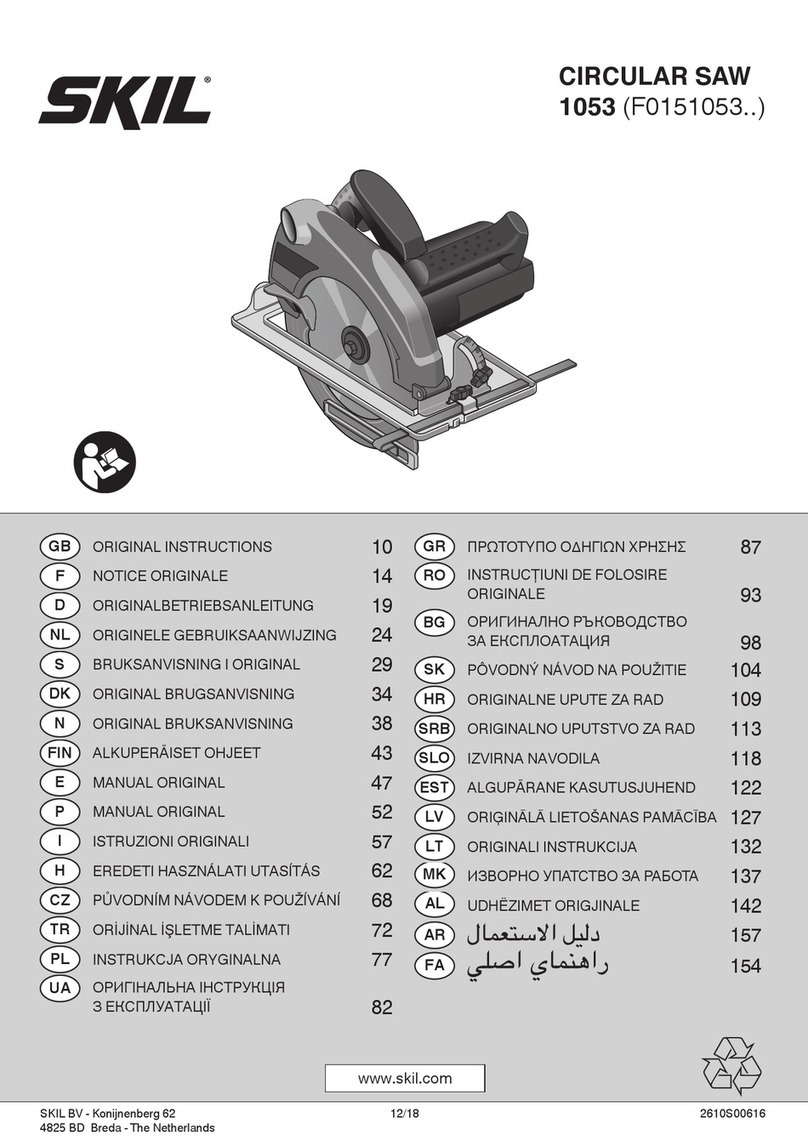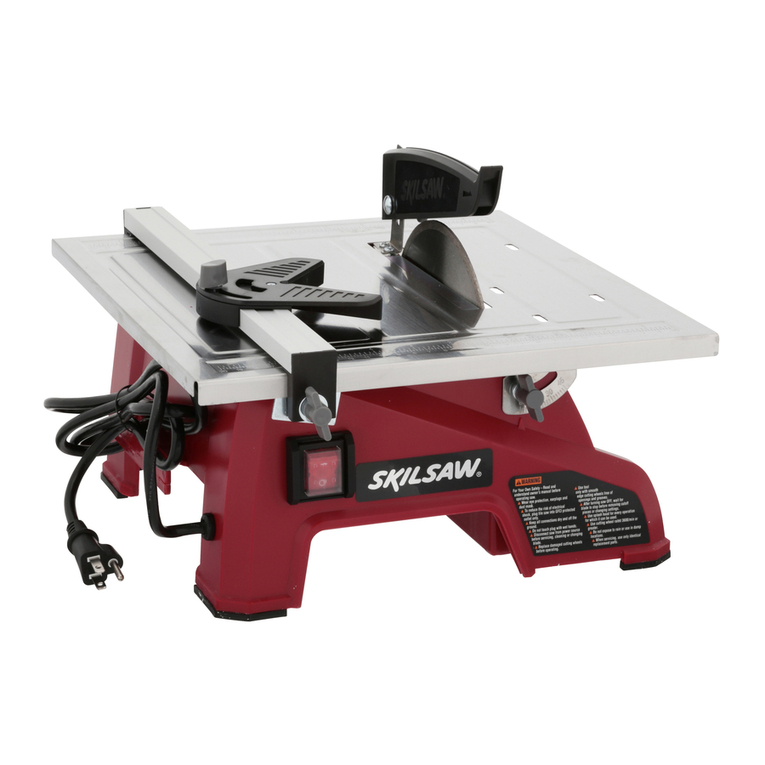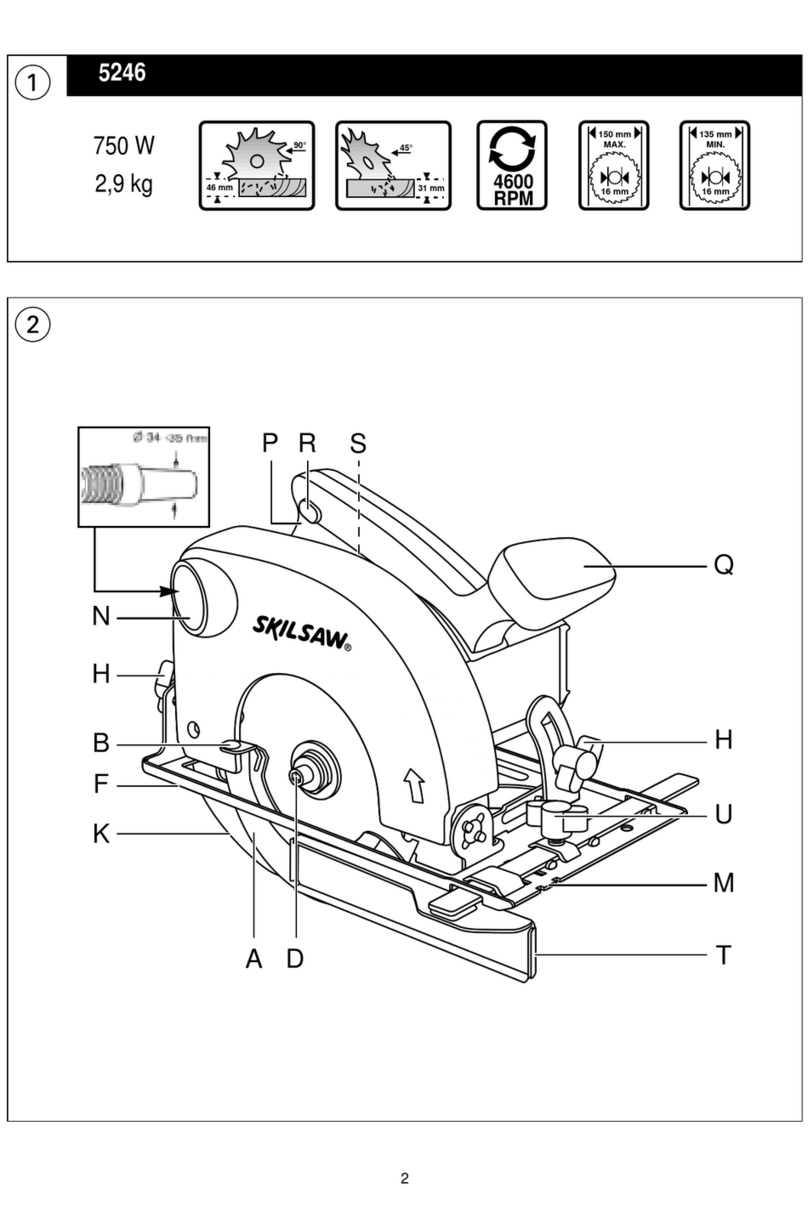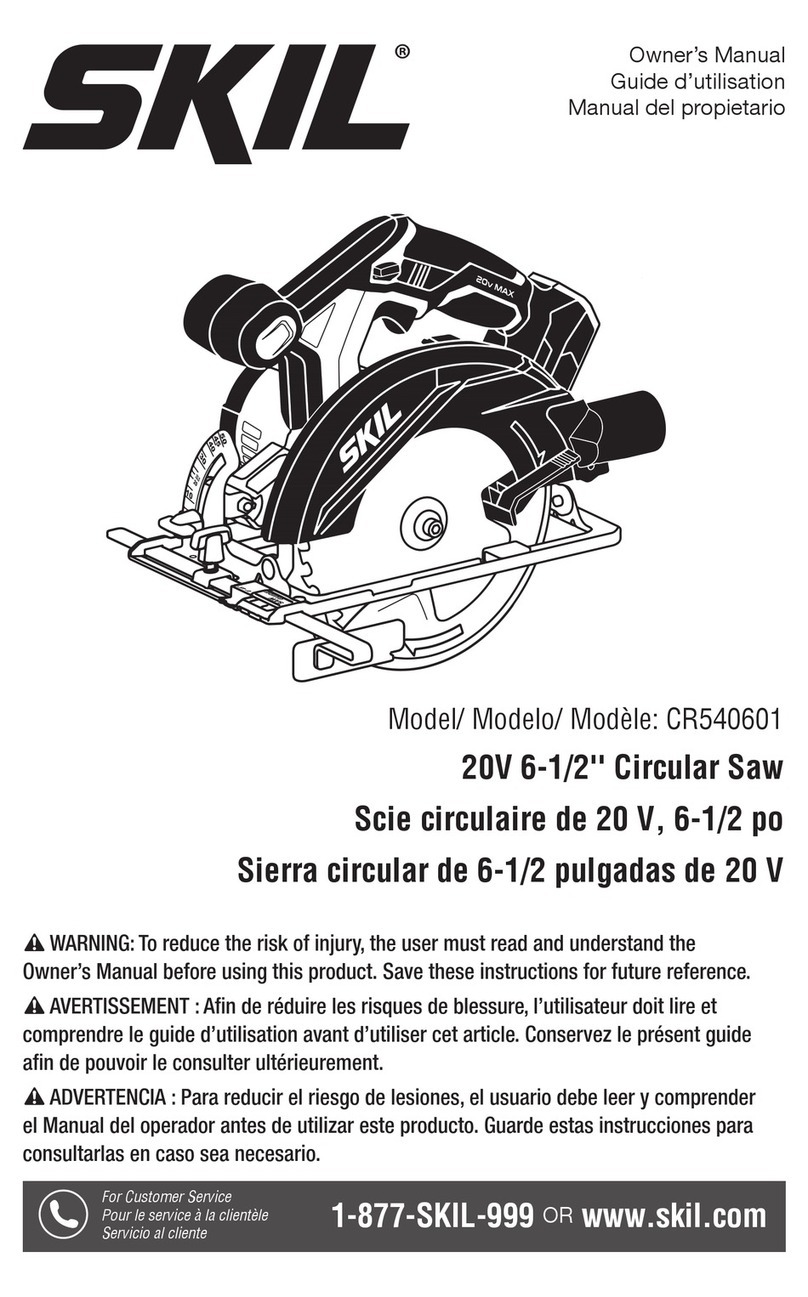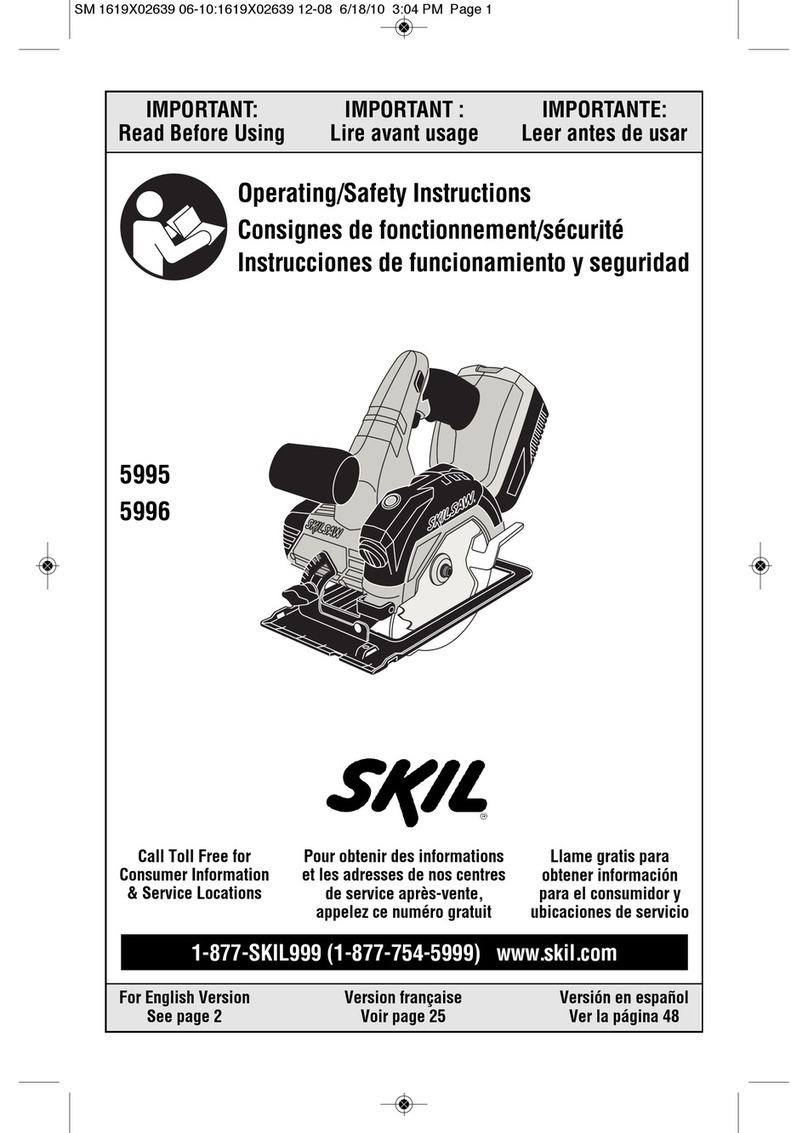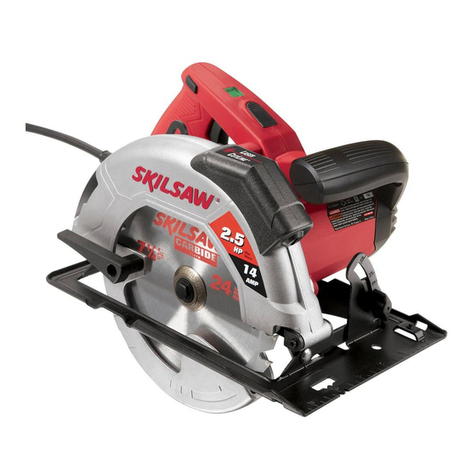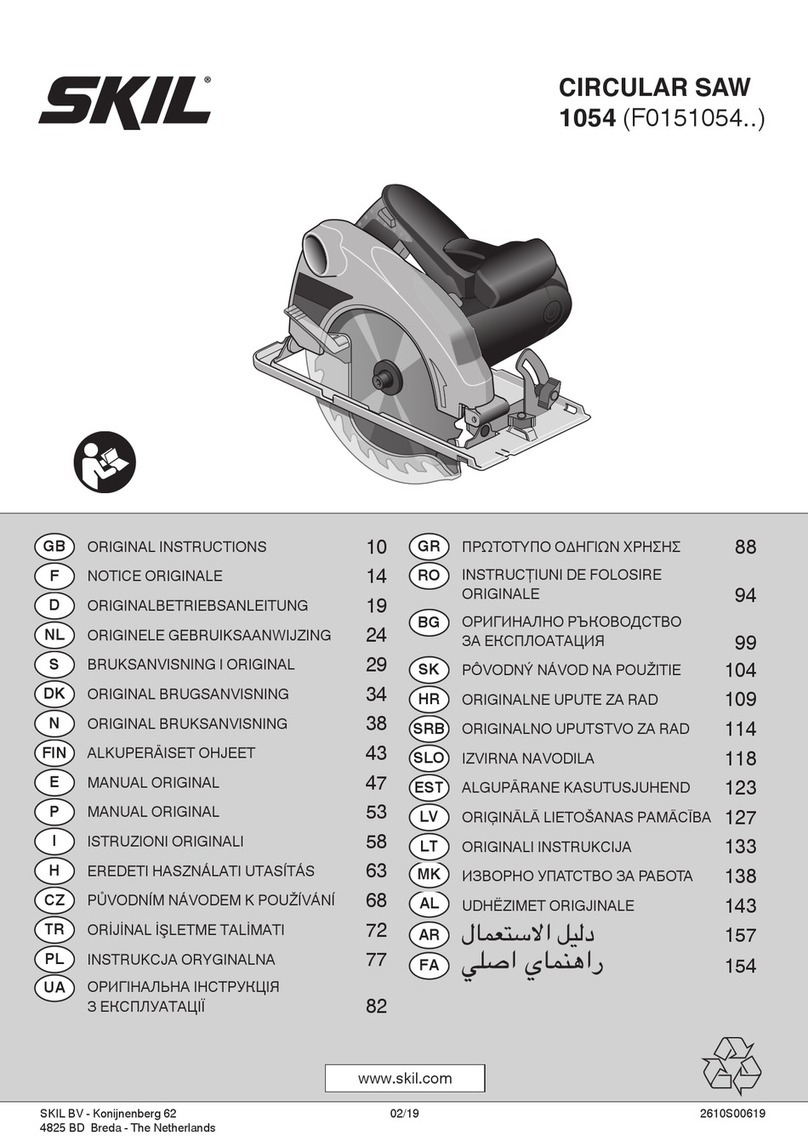4.
Additional Safety Rules
KICKBACKS AND POSSIBLE INJURY
CAN USUALLY BE AVOIDED BY:
a. Maintaining the rip fence parallel to the sawblade.
b. Keeping the sawblade sharp. Replacing or sharpening
anti-kickback pawls when points become dull.
c. Keeping sawblade guard, spreader and anti-kickback
pawls in place and operating properly. The spreader must
be in alignment with the sawblade and the pawls must stop
a kickback once it has started. Check their action before
ripping.
d. NOT ripping workpiece that is twisted or warped or does
not have a straight edge to guide along the rip fence.
e. NOT releasing work until you have pushed it all the way
past the sawblade.
f. Using a Push Stick for ripping widths of 2" to 6" and an
auxiliary fence and Push Block for ripping widths narrower
than 2" (See “Basic Saw Operation, Using the Rip Fence”
section, pages 27–28).
g. NOT confining the cut-off piece when ripping or cross-
cutting.
h. When ripping, apply the feed force to the section of the
workpiece between the sawblade and the rip fence. Use
Push Stick or Push Block when appropriate (see item f.
above).
10. PROTECTION: Eyes, hands, face, ears and body.
TO AVOID BEING PULLED INTO
THE SPINNING TOOL,
DO NOT WEAR: Loose-Fitting Gloves
Loose Clothing
Necktie, Jewelry
DO: TIE BACK LONG HAIR
ROLL LONG SLEEVES ABOVE ELBOWS
a. If any part of your saw is missing, malfunctioning, has
been damaged or broken … such as the motor switch, or
other operating control, a safety device or the power cord …
cease operating immediately until the particular part is
properly repaired or replaced.
b. Wear safety goggles and a face shield if operation is
dusty. Wear ear plugs or muffs during extended periods of
operation. Small loose pieces of wood or other objects that
contact the rear of the revolving blade can be thrown back
at the operator at excessive speed. This can usually be
avoided by keeping the guard and spreader in place for all
“THRU-SAWING” operations (sawing entirely through the
work) AND by removing all loose pieces from the table with a
long stick of wood IMMEDIATELY after they are cut off.
c. Use extra caution when the guard assembly is removed
for resawing, dadoing, rabbeting or molding — replace the
guard as soon as that operation is completed.
d. NEVER turn the saw “ON” before clearing the table of all
tools, wood scraps, etc., except the workpiece and related
feed or support devices for the operation planned.
e. NEVER place your face or body in line with the cutting
tool.
• NEVER place your fingers and hands in the path of the
sawblade or other cutting tool.
• NEVER reach in back of the cutting tool with either hand to
hold down or support the workpiece, remove wood scraps,
or for any other reason. Avoid awkward operations and hand
positions where sudden slip could cause fingers or hand to
move into a sawblade or other cutting tool.
• DO NOT perform any operation “FREEHAND” — always
use either the rip fence or the miter gauge to position and
guide the work.
• NEVER use the rip fence when crosscutting or the miter
gauge when ripping. DO NOT use the rip fence as a length
stop.
• NEVER hold onto or touch the “free end” of the workpiece
or a “free piece” that is cut off, while power is “ON” and/or the
sawblade is rotating.
• Shut “OFF” the saw and disconnect the power cord when
removing the table insert, changing the cutting tool, removing
or replacing the blade guard, or making adjustments.
• Provide adequate support to the rear and sides of the saw
table for wider or long workpieces.
• Plastic and composition (like hardboard) materials may be
cut on your saw. However, since these are usually quite hard
and slippery, the anti-kickback pawls may not stop a kick-
back. Therefore, be especially attentive to following proper
setup and cutting procedures for ripping. Do not stand, or
permit anyone else to stand, in line with a potential kickback.
f. If you stall or jam the sawblade in the workpiece, turn saw
“OFF”, remove the workpiece from the sawblade, and check
to see if the sawblade is parallel to the table slots or grooves
and if the spreader is in proper alignment with the sawblade.
If ripping at the time, check to see if rip fence is parallel with
the sawblade. Readjust as indicated.
g. NEVER gang crosscut — lining up more than one work-
piece in front of the blade (stacked vertically, or horizontally
outward on the table) and then pushing through sawblade.
The blade could pick up one or more pieces and cause a
binding or loss of control and possible injury.
h. DO NOT remove small pieces of cut-off material that may
become trapped inside the blade guard while the saw is
running. This could endanger your hands or cause a kick-
back. Turn saw “OFF” and wait until blade stops.
WARNING

